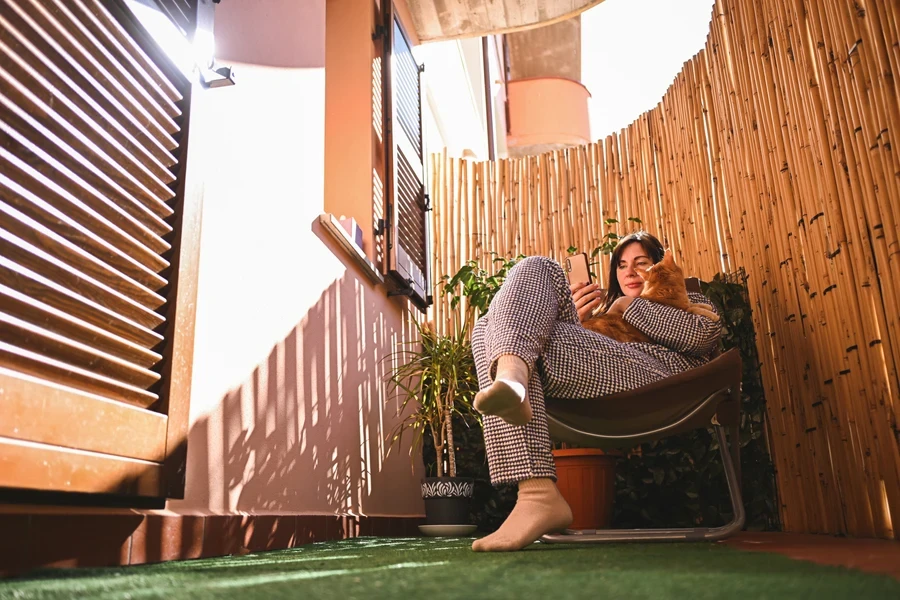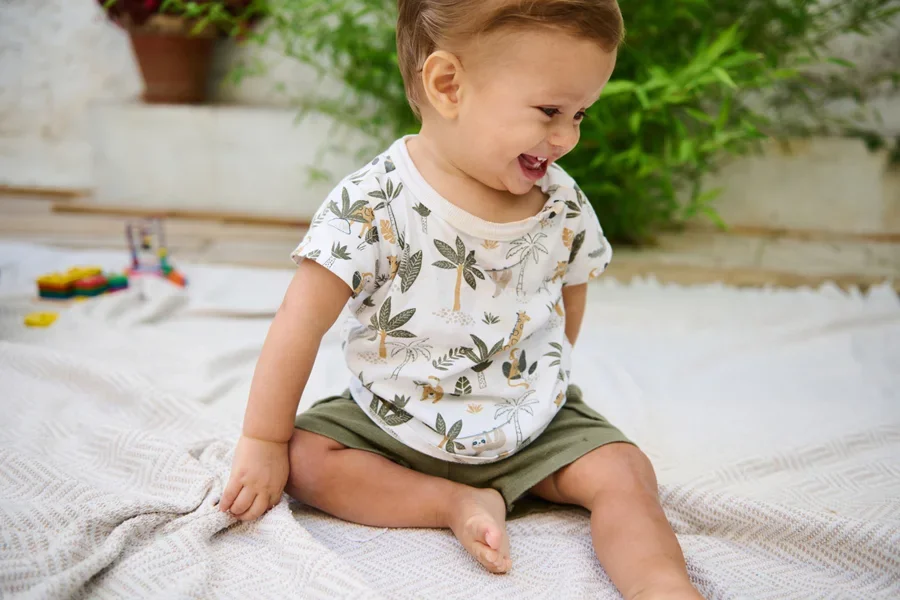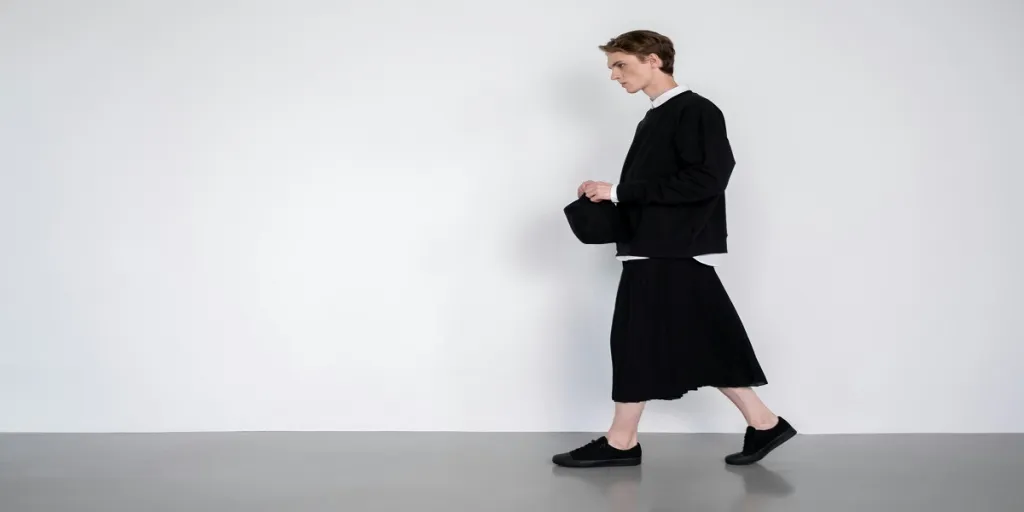Bamboo clothing, woven from organic bamboo fibers, is breathable, moisture-wicking, naturally antibacterial, and thermo-regulating, for an experience that is breezy but ultra-comfortable.
Nowadays, as more shoppers crave eco-friendly and sustainable fashion that isn’t scratchy like hemp or priced like silk, it’s unsurprising that pieces made from bamboo are gaining popularity for their biodegradable, hypoallergenic, and UV-blocking properties. Bamboo clothes now run the full range of items, from athleisure leggings to seamless underwear and cushy bamboo socks.
In this article, we’ll unpack five standout trends to help you propel bamboo clothes sales through 2026.
Table of Contents
An overview of the global bamboo clothing market
5 bamboo clothing trends retailers should stock
1. Bamboo T-shirts and leggings
2. Dream-soft bamboo sleep sets
3. Seamless bamboo underwear
4. Bamboo nursery and infant wear
5. Bamboo-enhanced technical gear
An overview of the global bamboo clothing market
The global bamboo clothing market is currently valued at USD 2 billion and is projected to grow at an 8.5% CAGR to hit USD 3.84 billion by 2032.
North America currently holds the top revenue spot, driven by consumers paying premium prices for ultra-soft, odor-resistant tees and luxurious sleep sets. The European market is also gaining traction under its “Green Deal” sustainability rules. Finally, Asia-Pacific’s ample bamboo supply, cost-efficient mills, and Gen-Z’s appetite for eco-athleisure are turning it into the sector’s fastest-growing market.
5 bamboo clothing trends retailers should stock
1. Quick-dry bamboo workout gear

Quick-dry bamboo tops and temperature-regulating bamboo leggings are soft, like pajamas, yet feature tiny holes in the yarn that lift sweat off the skin and boost airflow, keeping wearers dry from the gym to the office. Bamboo also offers some natural sun protection, which is particularly useful for runners and cyclists.
Most fabrics mix about 95% bamboo fiber with 5% spandex, making them stretchy but also helping them regain their shape after washing. T
Store owners should consider placing a small fabric swatch in a prominent place so that shoppers can touch this incredible fabric first; the smooth texture often helps to close the sale.
Display matching leggings, crop tops, and bamboo sport socks together or list them as “complete sets” online. You can also add small extras, like headbands, to increase the basket size. And because bamboo feels more premium than plain polyester, you can charge a little more and still give shoppers great value.
2. Dream-soft bamboo sleep sets

Bamboo sleep sets feel light, like silk, but let the skin breathe better than linen. The fabric’s tiny air pockets draw heat away from the body, helping hot sleepers stay cool in the summer. Yet, the same knit traps warmth in air-conditioned spaces. Because bamboo fiber is smooth and naturally hypoallergenic, those with eczema or sensitive skin often prefer bamboo pajamas over flannel or cotton.
Boost average order values by grouping items that go well together. For example, list matching bamboo robes, eye masks, or pillowcases as easy add-ons. Incentives, such as “Bundle and save 15 percent,” nudge buyers to pick full set and lift profit with minimum effort.
3. Seamless bamboo underwear

Underwear is also getting a green upgrade as shoppers swap synthetic knits for seamless bamboo boxer briefs, anti-odor bamboo panties, and wire-free bamboo bras that promise day-long freshness. Lab tests cited by the Japan Textile Inspection Association found that about 70% of bacteria placed on bamboo fiber perished rapidly. That antimicrobial edge, paired with the yarn’s moisture-pulling micro-gaps, keeps midday odor in check.
Seams are often sealed with heat, allowing the fabric to lie flat and preventing it from rubbing against itself, thereby reducing wear over time. Plant-based elastic is often used for the waistbands, which is good news for people who may be allergic to latex. Finally, sweat-pulling liners and printed tags keep everything dry and itch-free.
4. Bamboo nursery and infant wear

New parents are increasingly gravitating to ultra-soft bamboo baby onesies, hypoallergenic swaddle blankets, and airy bamboo muslin burp cloths. The yarn’s naturally eczema-friendly weave glides over sensitive skin, disperses heat, and resists odor without chemical sprays.
In-store, group bamboo crib sheets, swaddles, and matching baby blankets. Let shoppers feel the cloth and emphasize its easy-wash nature.
5. Bamboo-enhanced technical gear

Outdoor brands are splicing bamboo-cotton blends for items like four-way-stretch bamboo fleeces that work great for activities such as hiking, cycling, and camping. A slim-fit UV-blocking bamboo hoodie pairs the fiber’s natural sun shield with a seam-taped, water-repellent shell, keeping trail runners dry without the usual chemical finish.
Bamboo compression socks can help to wick sweat away and keep wearers blister-free, while bamboo-spandex base layers hold warmth even when damp, thanks to quick-drying inner loops. Sold in biodegradable packaging, retailers can land a triple win: next-gen performance, planet-friendly storytelling, and margins that rival premium merino.Final words
As a clothes seller, closing the loop on these five bamboo trends is simple: position bamboo jersey shirts beside antistatic bamboo underwear, layer in bamboo charcoal hoodies for trail lovers, and round out the rack with bamboo activewear wholesale packs that cater to gyms and studios. The common thread – a carbon-neutral supply chain paired with breathable bamboo fiber – gives eco-conscious shoppers a story that cotton and polyester can’t match.
In-store, spell out those gains on hang tags and reinforce them in product photos, helping your sustainable bamboo textiles section to do the heavy lifting. Soon you’ll notice larger baskets, followed by re-orders, and a developing reputation for stocking fabric that feels good on skin and is lighter on the planet.




